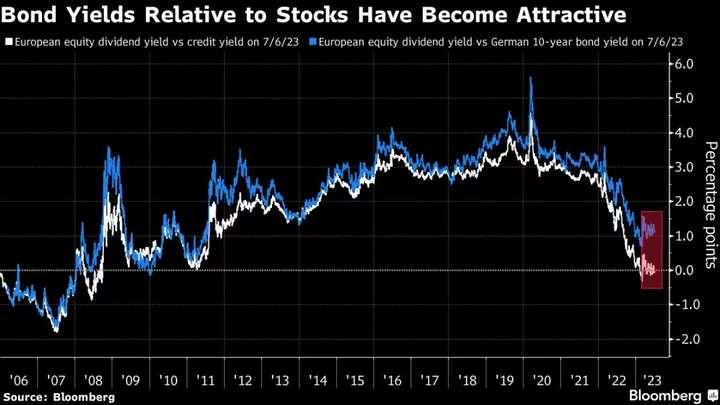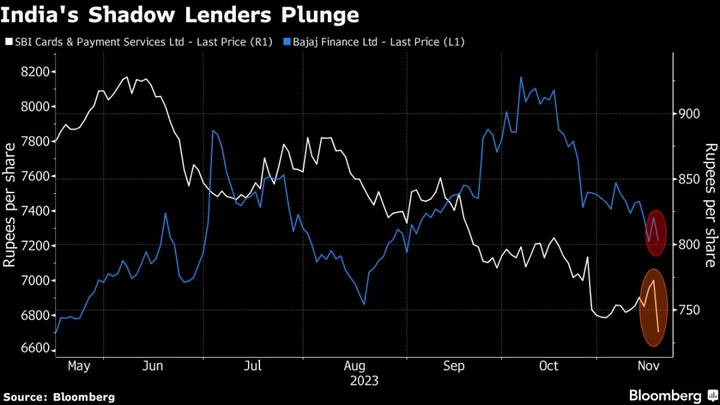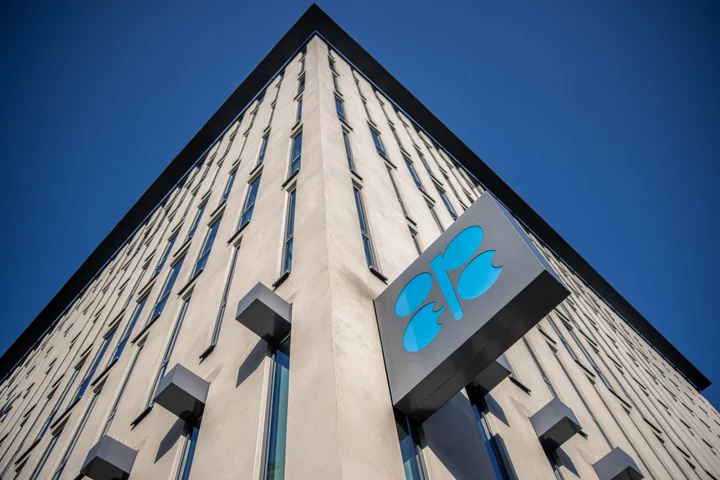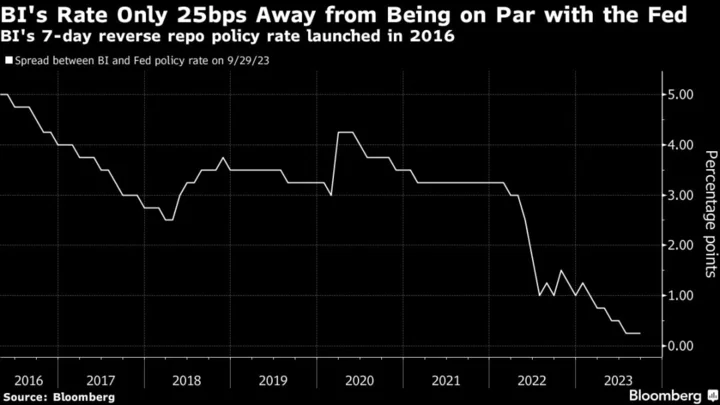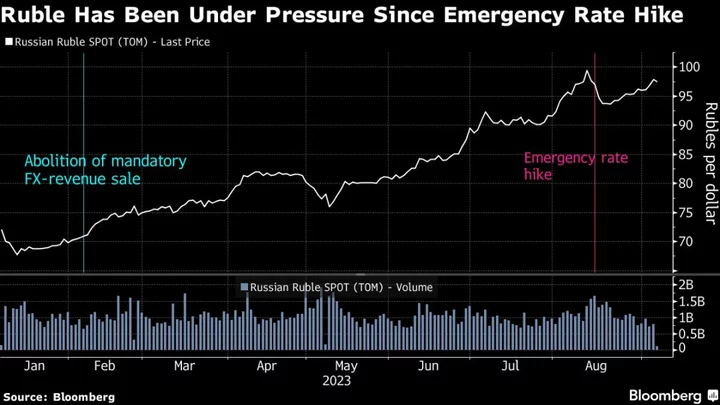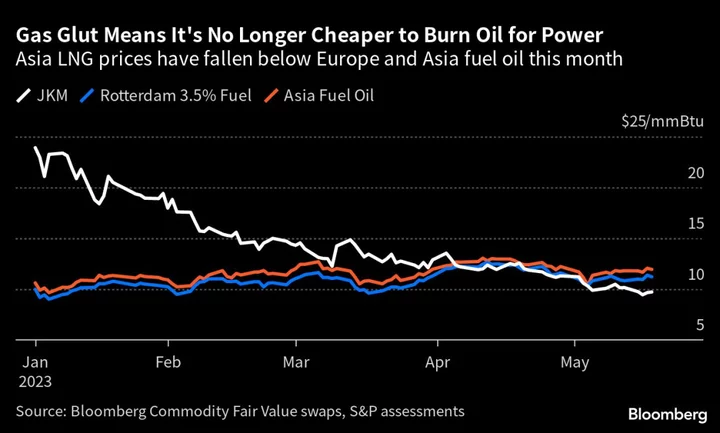Oil steadied after tumbling on Thursday following an OPEC+ meeting that promised further output cuts but was hazy on the details.
Brent crude for February traded near $81 a barrel, after sliding 2.4% in the previous session, while West Texas Intermediate was around $76. The alliance announced roughly 900,000 barrels a day of fresh output cuts from January, but the curbs are voluntary, with Angola already rejecting its quota. Saudi Arabia said it will prolong its separate 1 million barrel-a-day reduction through the first quarter.
Read More: OPEC+ ‘Voluntary’ Oil Output Cuts Fail to Convince Traders
Crude initially climbed Thursday after OPEC+ reached a preliminary agreement on reductions, in the hopes that would help stem an anticipated surplus at the start of next year. That optimism quickly faded on the lack of details — including the absence of a concluding press conference and final communiques that left traders puzzled.
The outcome of the OPEC+ meeting was a “confusing entangled mess,” Vandana Hari, founder of consultancy Vanda Insights, said in a Bloomberg TV interview. “These are all still voluntary cuts, and that’s one of the reasons for the disappointment,” she said, adding that whether the extra 900,000 barrels a day of additional curbs are delivered over the first quarter remains to be seen.
Crude is set to end the week flat following the OPEC+ roller-coaster, after logging its second monthly decline on signals of increasing supply from outside the group and a shaky demand outlook. Those concerns were underscored on Thursday, when the US reported that crude output in the world’s largest producer hit a record high of 13.2 million barrels a day in September.
Read More: Skepticism and Confusion: What Analysts Say About the OPEC+ Cuts
Meanwhile, Brazil — which has contributed to the increase in global supplies — said it would join the OPEC+ alliance cooperation charter next year, but won’t be taking part in any production cuts for now.
The outcome of the meeting is a “bittersweet victory” for Saudi Arabia as its inability to secure a group-wide agreement doesn’t bode well for the group’s unity and its ability to balance the market, Jorge Leon, senior vice president of oil market research at Rystad Energy, said in a note. There’s likely to be a supply deficit of about 400,000 barrels a day in the first half with the cuts, and Brent should trade between $80 and $85 a barrel in the coming months, he said.
To get Bloomberg’s Energy Daily newsletter into your inbox, click here.


